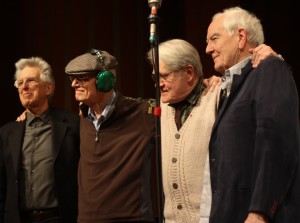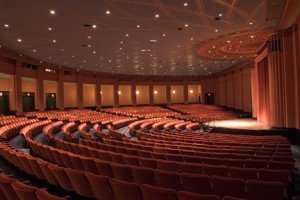Innerviews: Music Without Borders
(Extraordinary Conversations with Extraordinary Musicians)
by Anil Prasad
Abstract Logix Books; 315 pages, Published 2010

Anil Prasad has covered music on the internet longer than practically anyone. He started the website Innerviews in 1994, well before blogging, social media, and a host of other technological changes. The web has changed remarkably over the past sixteen years, but Innerviews has remained a consistent and engaging part of the internet’s musical life.
Prasad regularly publishes interviews with musicians from a plethora of genres: jazz, fusion, funk, prog, world music, electronica, etc. Innerviews the book collects some of his most noteworthy conversations with a diverse yet distinguished assortment of musicians.
Each chapter is devoted to a different artist (24 in all). Interviewees include Victor Wooten (who also writes the book’s foreword), John McLaughlin, David Torn, Björk, McCoy Tyner, and David Sylvian.
(True, the emphasis is on jazz, world, and popular music, but even the most classically oriented of Sequenza 21’s readers will likely find plenty here that speaks to the lives of concert music artists as well).
Prasad sets up the interviews with lengthy introductions, detailing the artists’ biographies and respective career trajectories. The interviews themselves feature discussions of creative process, musical inspirations, and approaches to performing and recording. Happily, Prasad avoids the sensational (PR-induced) talking points that are so often found in many recent “press interviews.” He instead favors affording the artists a more open-ended conversation, and the chance to share in depth observations about the music itself.
There’s another key component of every Innerviews interview that’s worth mentioning. Prasad doesn’t shy away from the interior life of creative artists, asking each musician to describe their spiritual journey and how it relates to their musical experiences. It’s refreshing that this open-ended line of inquiry elicits such a variety of responses. It appears that, much like the panoply of musical styles referenced in Innerviews, the question of spirituality inspires in artists an abundance of creativity.





 For four weeks beginning October 12, 2010 at noon, remixers can visit Indaba’s
For four weeks beginning October 12, 2010 at noon, remixers can visit Indaba’s  With Britten’s Michelangelo Sonnets and his opera Peter Grimes staring up at us, we began to discuss their texts. We then pondered the connection between the poems and some biographical background: Britten and Pears’ early collaboration, their trip to America, and eventual partnership. In my initial lesson notes, I’d pointed out that theirs was a relationship that was frowned upon in many corners, and would still be illegal for more than two decades after they returned to Great Britain. I asked: what resonances to Britten’s life can be found in the poetry of Michelangelo?
With Britten’s Michelangelo Sonnets and his opera Peter Grimes staring up at us, we began to discuss their texts. We then pondered the connection between the poems and some biographical background: Britten and Pears’ early collaboration, their trip to America, and eventual partnership. In my initial lesson notes, I’d pointed out that theirs was a relationship that was frowned upon in many corners, and would still be illegal for more than two decades after they returned to Great Britain. I asked: what resonances to Britten’s life can be found in the poetry of Michelangelo? Arvo Pärt: Symphony No. 4
Arvo Pärt: Symphony No. 4 Estonian composer Arvo Pärt turned 75 yesterday. His record label ECM Records is celebrating his three-quarters of a century with two new recordings.
Estonian composer Arvo Pärt turned 75 yesterday. His record label ECM Records is celebrating his three-quarters of a century with two new recordings.